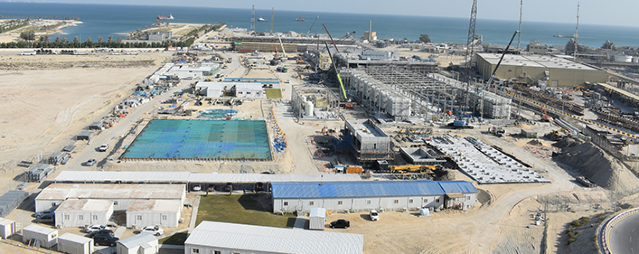At Al-Khobar 1 desalination plant Saudi Arabia first cubic meter of water produced by Acciona
- September 15, 2020
- Posted by: Lyn Wilson
- Category: Companies, Engineering, Water Treatment, Middle East

ACCIONA the Spanish conglomerate is dedicated to the development and management of infrastructure and renewable energy, concentrating on water treatment and reverse osmosis desalination. The company is responsible for this major achievement in the construction of Al-Khobar 1.
Desalination plant Al-Khobar 1 owned by Saline Water Conversion Corporation (SWCC) and located on the east coast of the Kingdom of Saudi Arabia has produced the first cubic meter of water.
The plant, equipped with energy-efficient Sea Water Reverse Osmosis (SWRO) technology, is a critical project in the modernization of the water sector being undertaken by the SWCC.
ACCIONA is the EPC contractor for Al Khobar 1, which it expects to complete before the end of 2020. The desalination plant will produce 210,000 cubic meters of clean drinking water per day, supplying a population of 350,000 inhabitants. Its capacity makes it one of the largest desalination plants in Saudi Arabia.
ACCIONA Project Director, Ignacio Lobo Gutiérrez said:
“This milestone is the result of good teamwork between the client, our engineers and the construction teams. Now that we are entering the final stage of construction, we will undertake a number of trials and tests to make sure everything works perfectly.”
After the US and Canada Saudi Arabia is the world’s third largest per capita consumer of water with a population of about 33.4million.The nation has introduced measures to rationalize water consumption as part of its Vision 2030 program. The aim is to achieve a 24 per cent reduction in consumption in 2021 and up to 43 per cent by the end of this decade.
According to the latest Sustainability Report by ACCIONA, desalinated water production in the Middle East will be 13 times higher in 2040 than it was in 2014. In a region with severe water scarcity, demand for desalinated water is being driven by climate change and population growth.
